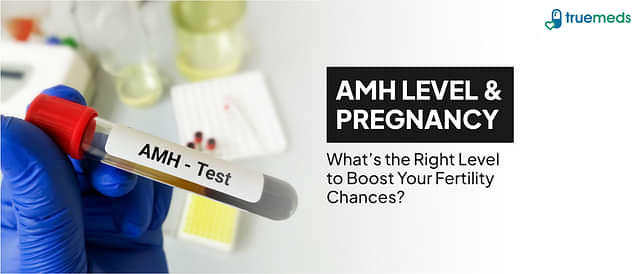Hormones in the body: overview, types and functions
Last updated on : 19 Nov, 2025
Read time : 9 min
What are hormones?
Hormones are powerful chemical messengers produced and released by the glands in your endocrine system that regulate nearly all of your body’s essential functions [1]. These chemicals coordinate vital processes such as metabolism, growth and development, mood, sexual function, and sleep [2].
The endocrine glands are located throughout your body. Once secreted (released), hormones travel via the bloodstream to specific target cells, organs, or tissues. They bind to specific receptors to transmit signals, instructing your body on what to do and when to do it. While traditionally defined as a blood-borne secretion, the definition has expanded to include similar regulatory substances that work through diffusion across cell layers (paracrine and autocrine signalling), not just through the circulatory system [1].
What is the hormone’s function?
The endocrine system uses hormones to regulate a wide range of bodily functions. It constantly monitors hormone levels in the blood to maintain homeostasis, which is the body’s internal balance.
When a hormone level rises above the required range, the pituitary gland or other control centers detect this and signal the relevant glands to stop production. Conversely, when levels fall below a certain threshold, the system signals to produce and release more.
Hormones impact nearly every bodily process, including:
- Regulating metabolism (how the body converts food to energy)
- Influencing emotions and mood
- Controlling growth and development
- Maintaining fluid and electrolyte balance (homeostasis)
- Governing sexual function and fertility
- Regulating sleep cycles
- Managing blood pressure
- Coordinating stress response
Types of hormones
Hormones are classified based on their chemical structure and synthesis. This chemical nature determines how they travel in the bloodstream and how they interact with their target cells. The three main classes are steroid hormones, peptide hormones, and amino acid derivatives.
1. Steroid hormones
Steroid hormones are lipid-soluble (fat-soluble), which means they can readily pass directly through a cell’s plasma membrane. Inside the target cell, they bind to specific intracellular receptors, forming a hormone-receptor complex. This complex then moves into the nucleus, binding directly to DNA to influence gene regulation and protein synthesis.
Examples: Estrogen, progesterone, and testosterone (produced by reproductive organs), and cortisol (produced by the adrenal glands).
2. Peptide hormones
Peptide hormones are hydrophilic and lipophobic (water-soluble), meaning they cannot easily cross the plasma membrane. Instead, they bind to specific receptors located on the cell surface. This binding activates a series of intracellular molecules called second messengers (e.g., cAMP, calcium ions). This process, known as signal transduction, amplifies the initial signal inside the cell to initiate a response.
Examples: Insulin, glucagon, leptin, ADH (antidiuretic hormone), and oxytocin [3].
3. Amino acid derivatives (Amine hormones)
These hormones are derived from amino acids, primarily tyrosine. Amine hormones can have properties similar to both peptide and steroid hormones. Endocrine cells store these hormones until they are needed. They typically work by binding to protein receptors on the cell’s outer surface, which then activates second messenger molecules inside the cell.
Examples: Adrenaline (epinephrine), noradrenaline (norepinephrine), thyroxine (T4), and triiodothyronine (T3) [4].
Endocrine glands and their primary hormones
The human endocrine system is composed of several glands that produce and release hormones. These glands vary in size and location throughout the body.
| Gland | Location | Primary Functions | Key Hormones |
Reference |
| Pituitary Gland | Base of the brain/skull | Often called the “master gland.” Produces hormones that regulate other glands (thyroid, adrenal, ovaries, testes) and controls growth. | Growth Hormone (GH), Thyroid-Stimulating Hormone (TSH), Adrenocorticotropic Hormone (ACTH) | [5] |
| Hypothalamus | Brain (above the pituitary) | Regulates the endocrine system by determining when to tell the pituitary gland to release or stop hormones, using information from the nervous system. Controls functions like appetite, sleep, and emotions. | Releasing and Inhibiting Hormones (e.g., TRH, GnRH) | [6] |
| Thyroid | Front of the neck (butterfly-shaped) | Controls the body’s metabolic rate (how the body uses energy). | Thyroxine (T4), Triiodothyronine (T3) | [7] |
| Parathyroid Glands | Four small glands on the back of the thyroid | Controls calcium levels in the blood, essential for proper functioning of the heart, nerves, and bones. | Parathyroid Hormone (PTH) | [8] |
| Adrenal Glands | One on top of each kidney | In charge of metabolic activities, blood pressure, sexual development, and the body’s stress response. | Cortisol, Adrenaline, Aldosterone | [9] |
| Pineal Gland | Brain | Regulates the sleep cycle (circadian rhythm). | Melatonin | [10] |
| Pancreas | Abdomen (about 15 cm or 6 inches long) | Plays a key role in digestion and, as an endocrine gland, regulates blood sugar. | Insulin, Glucagon | [11] |
| Ovaries (Females) | Lower abdomen | Produce female sex hormones, which regulate the menstrual cycle and fertility. | Estrogen, Progesterone | [2] |
| Testes (Males) | Scrotum | Produce sperm and the primary male sex hormone. | Testosterone | [2] |
Hormone Balance and Homeostasis
Your endocrine system is constantly working to maintain homeostasis, the internal balance of chemical conditions in your body. The pituitary gland acts as a central command center, signaling other glands to adjust hormone production based on need.
For example:
- If thyroid hormones are low, the pituitary releases TSH (Thyroid-Stimulating Hormone) to stimulate the thyroid [5].
- When blood sugar rises, the pancreas releases insulin to facilitate glucose uptake and lower the sugar level [11].
- Disruptions in this tightly regulated system can lead to hormonal imbalances, which may cause symptoms like weight changes, fatigue, mood swings, infertility, or sleep disorders.
Common Hormonal Disorders
Hormonal imbalances can result in various conditions, including:
- Diabetes Mellitus: Caused by an imbalance in insulin production or utilization.
- Hypothyroidism/Hyperthyroidism: Caused by an underactive or overactive thyroid gland, respectively [7].
- Polycystic Ovary Syndrome (PCOS): A common disorder in women linked to an imbalance of sex hormones.
- Cushing’s Syndrome: Caused by an excess of cortisol over a prolonged period [9].
- Growth Disorders: Due to abnormalities in Growth Hormone (GH) production or signaling.
How to Support Healthy Hormone Function
Maintaining a healthy lifestyle is the foundation for supporting your endocrine system and natural hormone balance.
- Get quality sleep: Aim for 7-9 hours of consistent, restorative sleep, as many hormones (like melatonin and growth hormone) are regulated during sleep.
- Eat a balanced diet: Focus on whole foods, including adequate healthy fats (essential for building steroid hormones) and lean protein.
- Exercise regularly: Physical activity can improve insulin sensitivity and reduce stress hormones like cortisol.
- Manage stress: Incorporate stress reduction techniques like yoga, meditation, or deep breathing to prevent chronic elevation of stress hormones.
- Stay hydrated: Water is essential for every bodily process, including the transport and action of hormones.
- Get regular check-ups: Consult your healthcare provider to monitor your health and hormone levels, especially if you notice persistent symptoms of imbalance.
Conclusion
Hormones are the body’s essential messengers, coordinating nearly every biological function, from metabolism and growth to mood and stress response. Understanding the types, sources, and functions of these chemicals helps us appreciate the critical role the endocrine system plays in maintaining our overall health. The key to a balanced system is maintaining a healthy lifestyle and consulting with a healthcare professional promptly if you suspect a persistent hormonal imbalance.
Disclaimer
This article is for informational purposes only and is not a substitute for professional medical advice, diagnosis, or treatment. Always seek the advice of a qualified healthcare provider with any questions you may have regarding a medical condition. Please consult a healthcare provider before beginning any new wellness practice, especially if you have an existing medical condition or are on medication.
References
[1] Campbell, M., & Jialal, I. (2022). Physiology, Endocrine Hormones. StatPearls Publishing. Retrieved from https://www.ncbi.nlm.nih.gov/books/NBK538498/
[2] Hormones. (2023, June 29). Cleveland Clinic. Retrieved from https://my.clevelandclinic.org/health/articles/22464-hormones
[3] Kołodziejski, P. A., Pruszyńska-Oszmałek, E., Wojciechowicz, T., Sassek, M., Leciejewska, N., Jasaszwili, M., Billert, M., Małek, E., Szczepankiewicz, D., Misiewicz-Mielnik, M., Hertig, I., Nogowski, L., Nowak, K. W., Strowski, M. Z., & Skrzypski, M. (2021). The role of peptide hormones discovered in the 21st century in the regulation of adipose tissue functions. Genes, 12(5), 756. https://doi.org/10.3390/genes12050756
[4] Shahid, M. A., Ashraf, M. A., & Sharma, S. (2023, June 5). Physiology, Thyroid Hormone. StatPearls Publishing. Retrieved from https://www.ncbi.nlm.nih.gov/books/NBK500006/
[5] Kamel-ElSayed, S. A., & Schwartz, J. (2023, May 1). Physiology, Pituitary Gland. StatPearls Publishing. Retrieved from https://www.ncbi.nlm.nih.gov/books/NBK459247/
[6] Shahid, Z., Asuka, E., & Singh, G. (2023, May 1). Physiology, Hypothalamus. StatPearls Publishing. Retrieved from https://www.ncbi.nlm.nih.gov/books/NBK535380/
[7] Armstrong, M., Asuka, E., & Fingeret, A. (2023, March 13). Physiology, Thyroid Function. StatPearls Publishing. Retrieved from https://www.ncbi.nlm.nih.gov/books/NBK537039/
[8] Lofrese, J. J., Basit, H., & Lappin, S. L. (2023, July 17). Physiology, Parathyroid. StatPearls Publishing. Retrieved from https://www.ncbi.nlm.nihs.gov/books/NBK482510/
[9] Dutt, M., Wehrle, C. J., & Jialal, I. (2023, May 1). Physiology, Adrenal Gland. StatPearls Publishing. Retrieved from https://www.ncbi.nlm.nih.gov/books/NBK537260/
[10] Ilahi, S., Beriwal, N., & Ilahi, T. B. (2023, April 24). Physiology, Pineal Gland. StatPearls Publishing. Retrieved from https://www.ncbi.nlm.nih.gov/books/NBK525955/
[11] Kamel-ElSayed, S. A., & Mukherjee, S. (2023, May 1). Physiology, Pancreas. StatPearls Publishing. Retrieved from https://www.ncbi.nlm.nih.gov/books/NBK459261/
Disclaimer
Our healthcare experts have carefully reviewed and compiled the information presented here to ensure accuracy and trustworthiness. It is important to note that this information serves as a general overview of the topic and is for informational purposes only. It is not intended to diagnose, prevent, or cure any health problem. This page does not establish a doctor-patient relationship, nor does it replace the advice or consultation of a registered medical practitioner. We recommend seeking guidance from your registered medical practitioner for any questions or concerns regarding your medical condition.
Popular Articles
Recommended Articles
Recent Articles
Company
About UsHealth ArticleHealth StoriesHealth LibraryDiseases & Health ConditionsAyurvedaAll MedicinesAll BrandsNeed HelpFAQSecuritySubscribe
Registered Office Address
Grievance Officer
Download Truemeds
Contact Us
Our customer representative team is available 7 days a week from 9 am - 9 pm.
v4.9.0
2025 - Truemeds | All rights reserved. Our content is for informational purposes only. See additional information.
Our Payment Partners












































